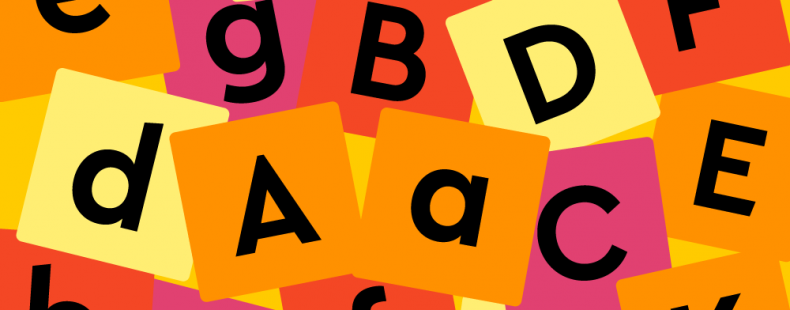When it comes to English letters, some of them are just much more popular than others. We don’t have anything against the letters Q and X, of course—there just aren’t that many opportunities to talk about quilts, quails, and … xylophones? That raises an interesting question, though. Out of all of the letters in the English alphabet, which one is the most popular and how do we find it? Do vowels dominate or do consonants get most of our attention? Well, the numbers have been crunched, and it turns out that there is a clear favorite when it comes to English’s most popular letter.
⚡️Take the quiz!
Once you know the A-B-Cs of most commonly used letters and other facts below, head over to our quiz to demonstrate your not-so-common word skills!
What is the most common letter?
According to the data, the most common letter in the English language is the letter E. E typically takes first place regardless of which analysis method is used. E’s frequency is likely due to the fact that it appears in the word the, the many plurals that end in -es, and in commonly used pronouns such as he, she, me, we, and they.
For the curious, the list of the top 10 letters used in the English language typically consists of some arrangement of the following letters:
- E, T, A, O, I, N, S, R, H, and L
What are the most common letters in five-letter words?
There are several strategies a person could use to try to win a certain daily game focused around five-letter words. If your strategy depends on letter frequency in five-letter words, then your top 10 letters are going to be:
- A, E, S, O, R, I, L, T, N, and U
If you’re going that route, it seems like AROSE and UNTIL would make a good pair of guesses to start with.
Learn all you need to know to be a champion at Wordle!
Are vowels more common than consonants?
The data suggests that, yes, vowels are more common than consonants with A, E, I, and O often appearing immediately in the top five most common letters. The letter U typically doesn’t make the top 10 but still hangs around the top 15. That wishy-washy “sometimes vowel” Y, though, usually finds itself among the less commonly used letters.
What is the most commonly used word?
According to the data, the word the is almost always the most popular word in English. It appeared four times in the previous sentence alone. This word is so common that it boosts the letters E and T into the top five, and the letter H often drops significantly in usage if the frequency of the is not accounted for.
What is the most common noun, verb, pronoun, adjective, and adverb?
When considering word frequency, it makes the most sense to limit the list to those that are commonly used in only one way. For example, the word that would be both the most common pronoun and adverb, and that is just boring. So, let’s narrow our scope to words that are popularly used as just one part of speech.
Based on this research, the most commonly used noun is time. (We really can never get enough of it, after all.) Unsurprisingly, the most commonly used verb is the verb be and its many different forms. For pronouns, the word it sits at the top of the list. When we look at adjectives, the first-place winner is the word good, which is pretty wholesome. For adverbs, the word not seems to be the one people like to use the most.
What is the least common letter?
According to most analyses, the letter Z is the least popular letter of the alphabet. Its lack of usage in British English, in particular really drags it down as it can’t rely on words like analyze or synthesize for a boost.
It probably won’t come as much surprise to learn that the letters Q, J, and X often appear at the bottom of the list. It may be more surprising to learn that the letter K often beats out the letter V to round out the bottom five spots.
Least common is better than going extinct! Learn about two letters that don’t exist anymore.
What is the research based on?
Typically, letter frequency calculations simply involve counting the letters used in a particular sample of writing. Which sample is used, though, often differs depending on the researcher.
In the past, a commonly used method was to use all of the base words in a dictionary (or multiple dictionaries) as the sample. However, this method doesn’t account for actual word frequency, and it often excludes plurals and verb tenses (forms ending in -s, -ed, -ing, etc.).
In modern times, it has become more popular to use word databases compiled from samples based on actual usage in writing. For example, one option is to count letter frequency while using a dataset consisting of every article that exists in the English version of Wikipedia. Another dataset that has been used is the database of every book that has ever been entered into Google’s Ngram Viewer.
Even these humongous datasets still clearly have some shortcomings. Neither factor in the extensive usage of words on social media, for example. Still, datasets like these do provide extremely large sample sizes and give a pretty good representation of letter usage in writing.
Based on the data, it seems like the letter E will stay on top until we invent a new article or two. Unless we all work together to make the word zyxqz a thing, the letter E can pride itself as being the most popular letter for the foreseeable future.














